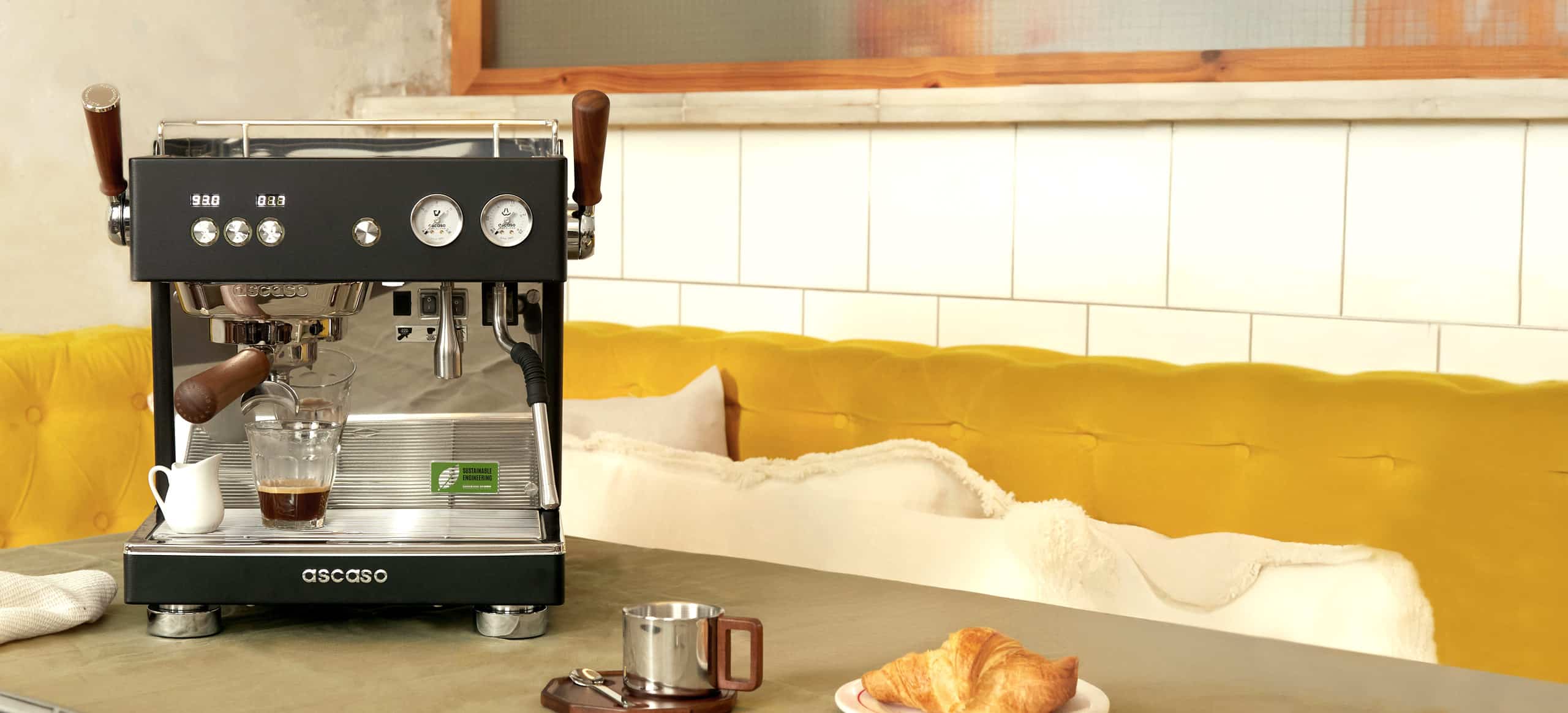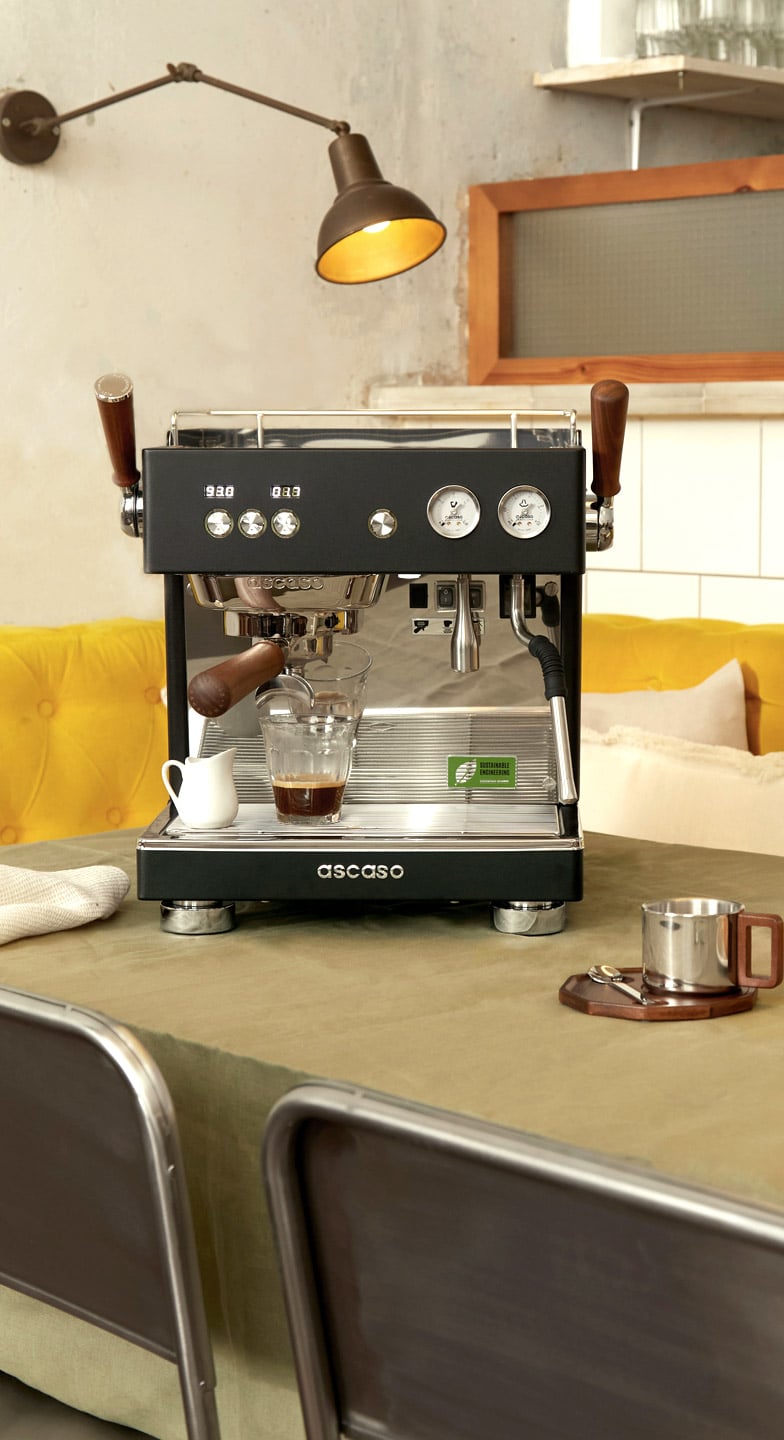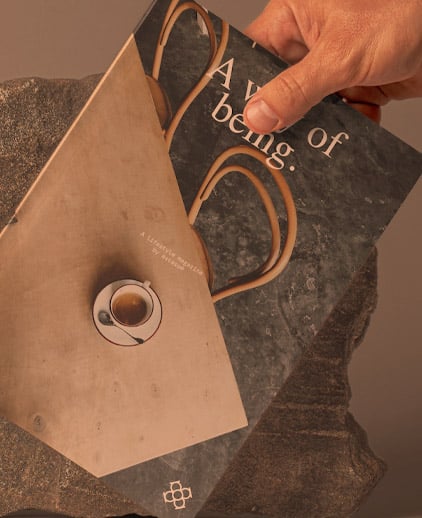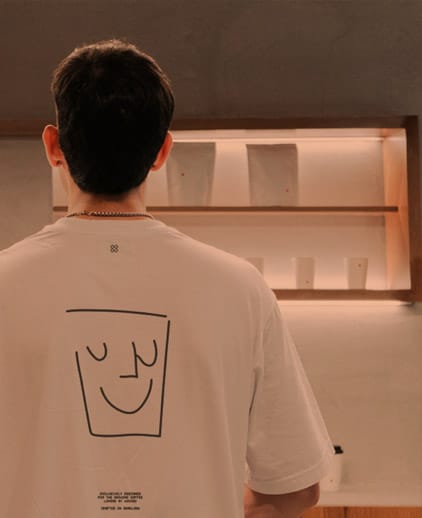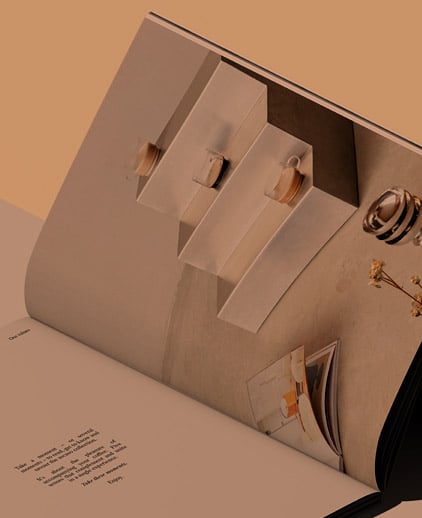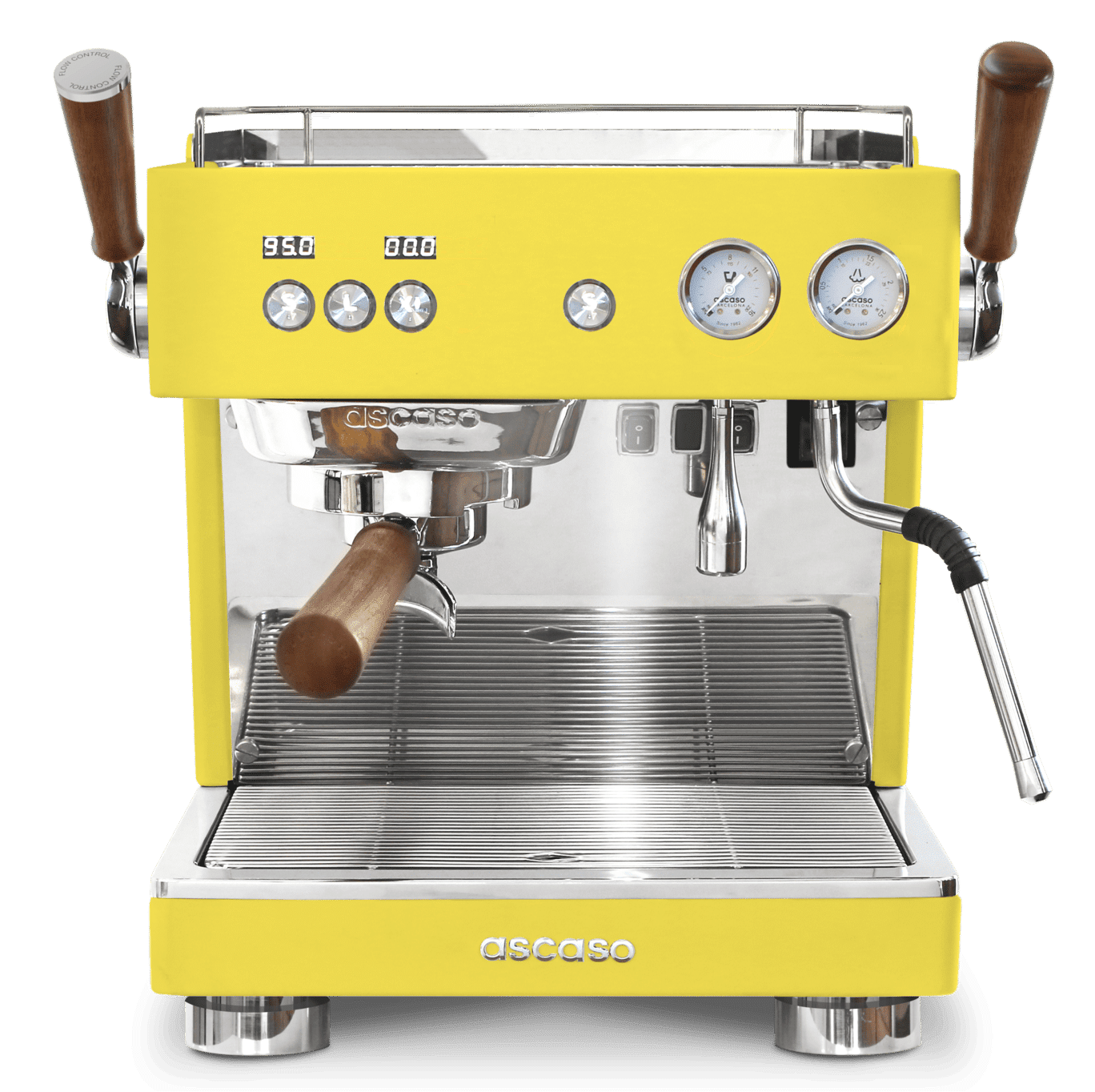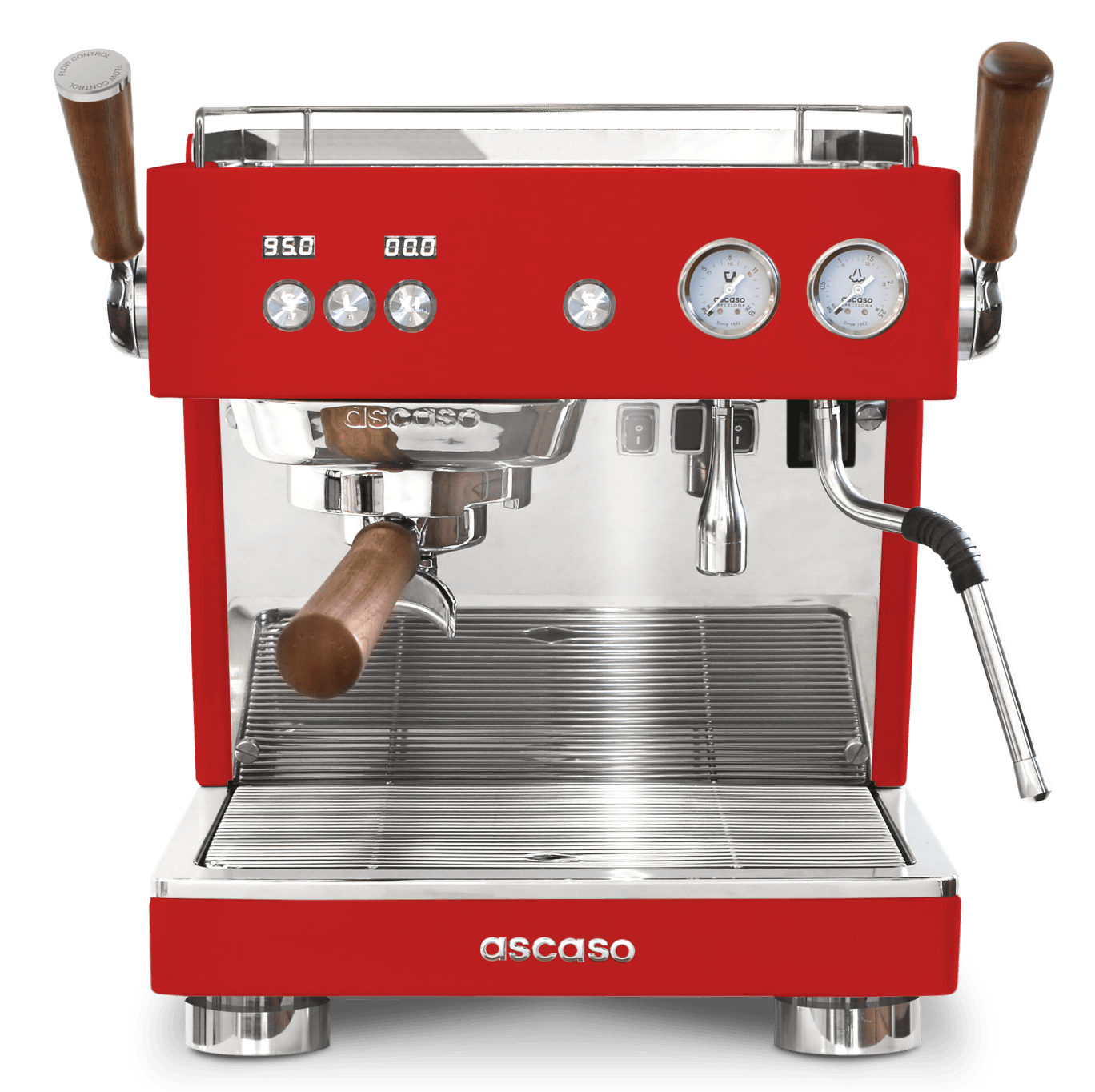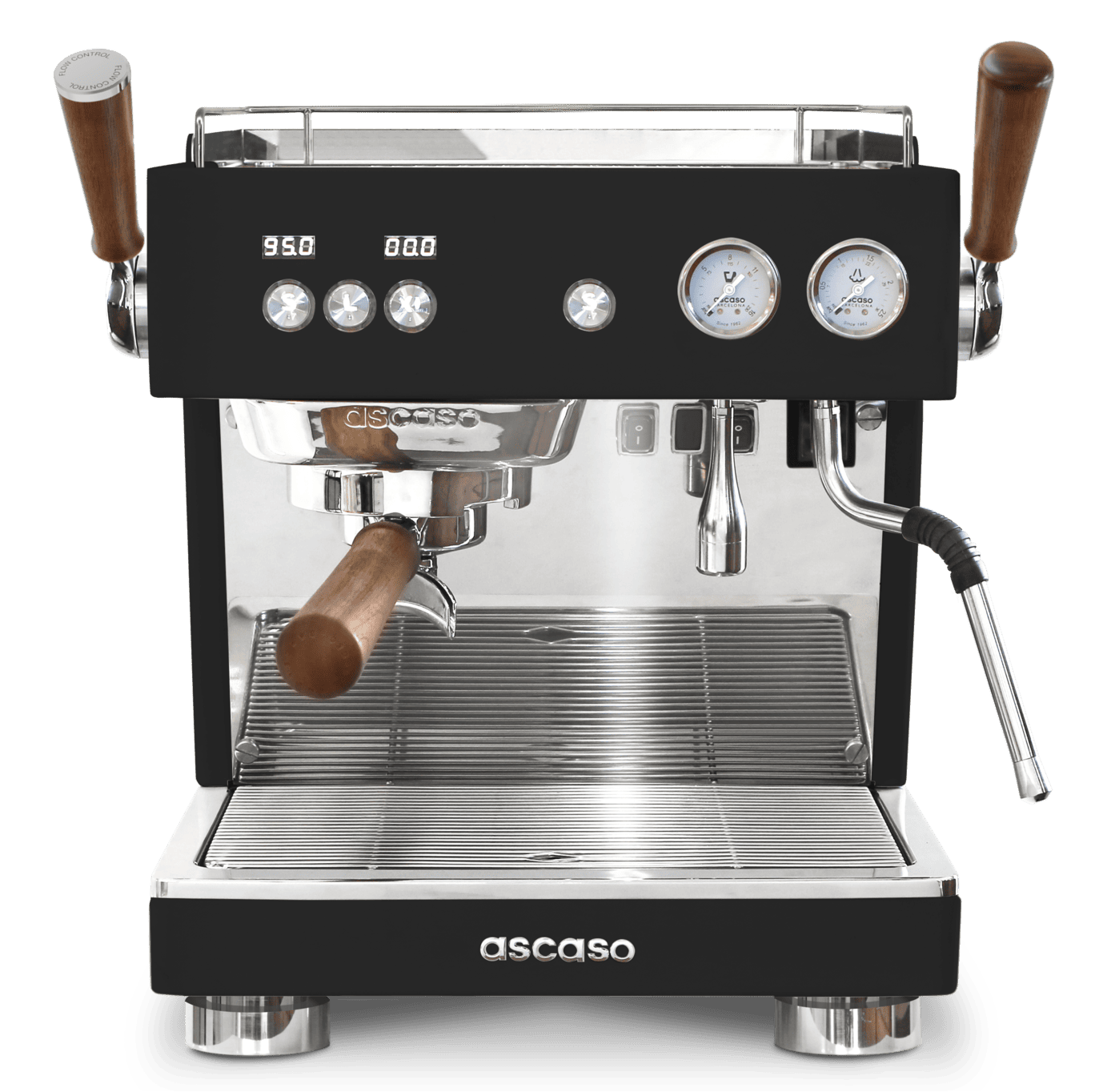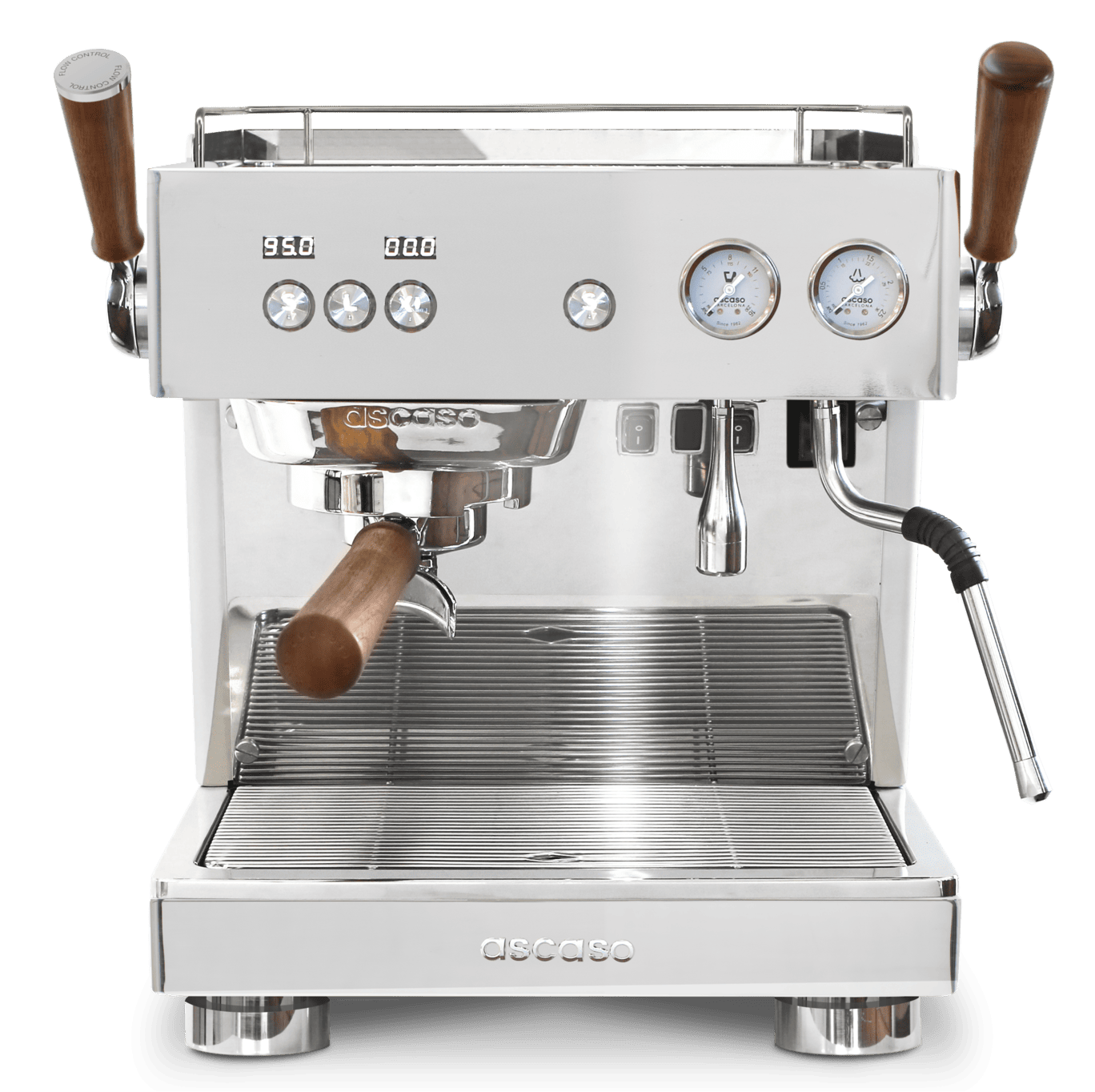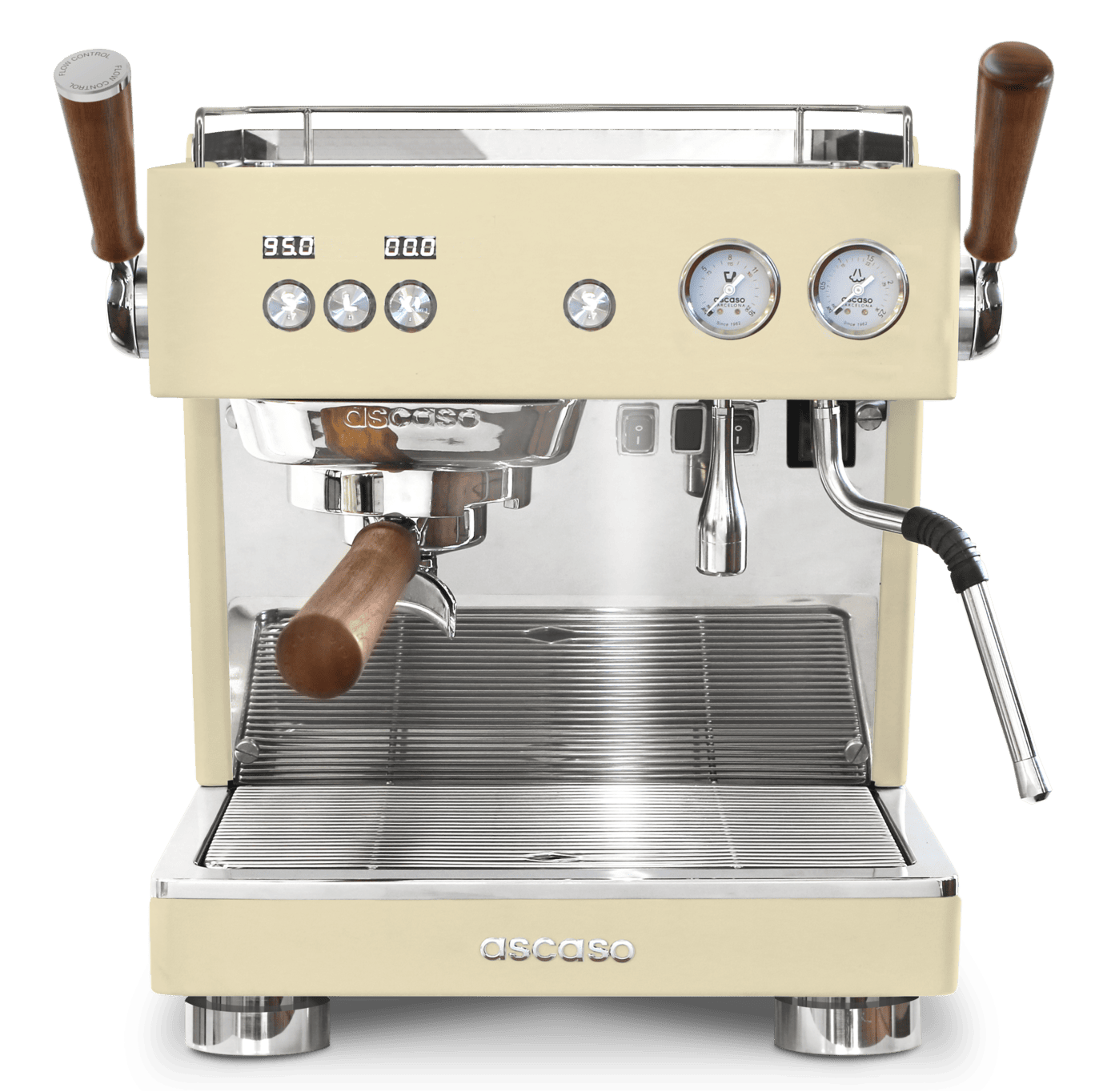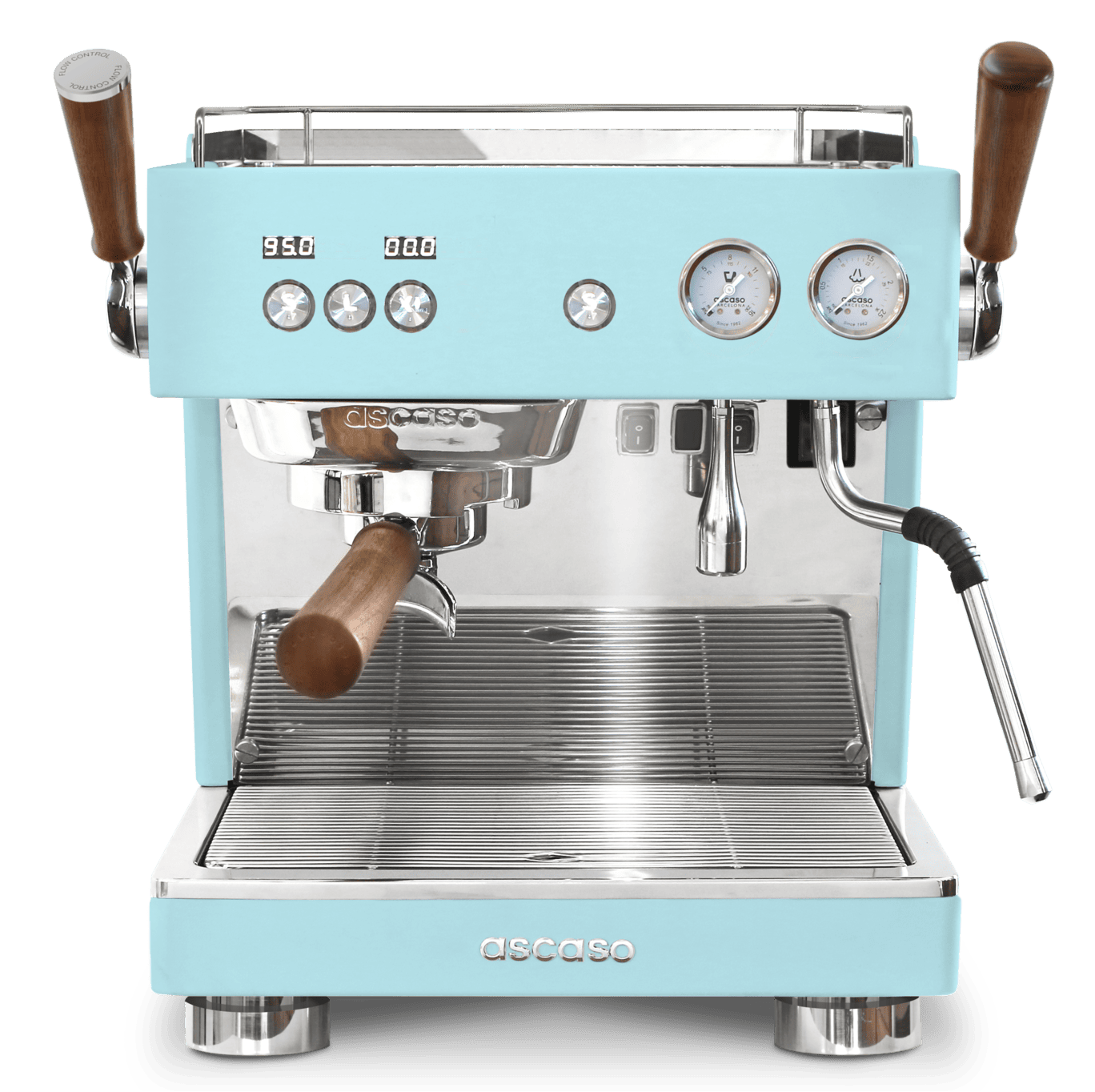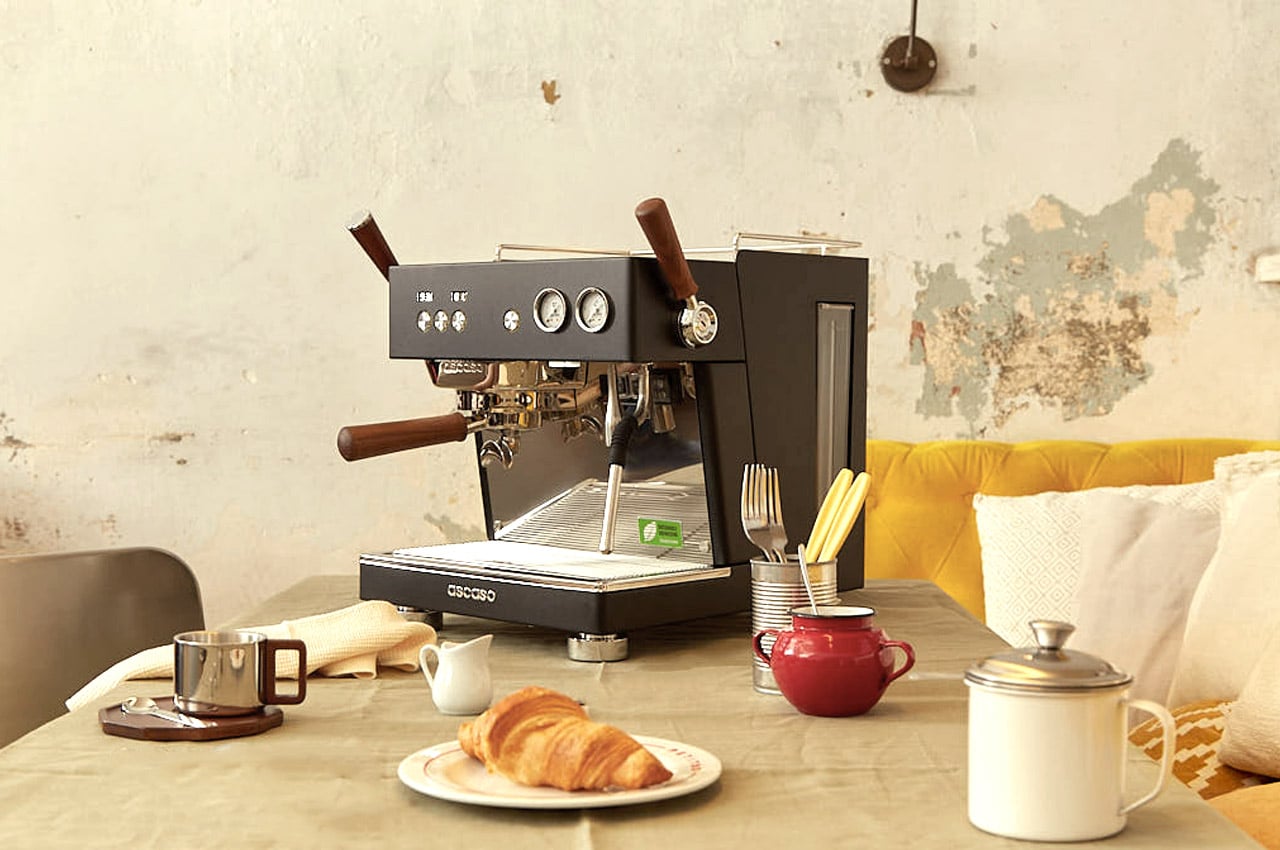
BABY T PLUS
This adaptable espresso machine is ideal for small coffee shops and mobile catering. It offers consistent performance in a compact and versatile design.
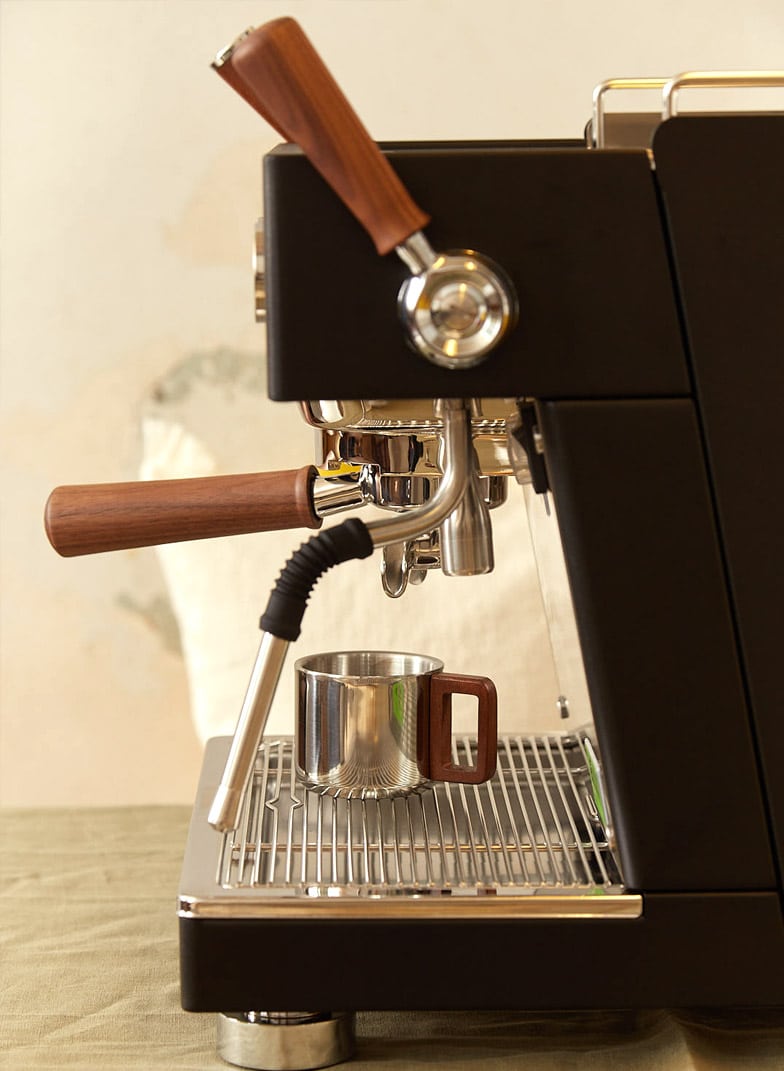
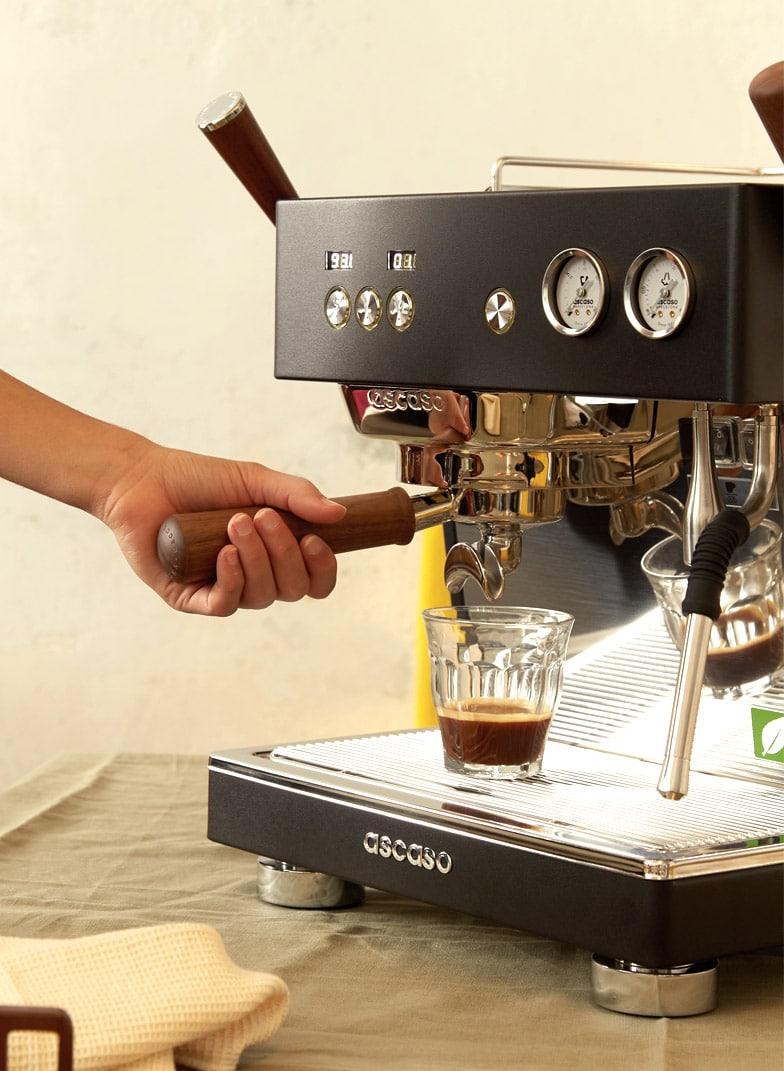
Energy efficient without compromising on performance
The combination of ascaso’s highperformance thermoblock
with an independent steam boiler results in 50% energy savings compared to a conventional espresso machine. At the same time the Baby features the fast availability of the coffee group and strong, consistent steam power that can work in parallel for an efficient workflow.
Professional- grade equipment and features
Born from the Barista T, the Baby T is a professional single-group espresso machine that incorporates the same advanced technology and features you’d expect from a toptier espresso machine.
With an outstanding thermal stability of
+/-0,5°C, independent PID temperature control of coffee group and steam boiler as well as an adjustable rotary pump it allows precision and consistency, whether you are pulling one shot or fifty.
Compact and modern design
It’s compact footprint allows it to fit in confine d spaces with limited counter space, while the flexibility to operate with either a water tank or mains connection make it a great option in mobile and catering services. The robust stainless-steel construction ensures longevity and reliability, while the wood details, steam joystick, digital display and backlit control buttons give the machine a modern industrial style.
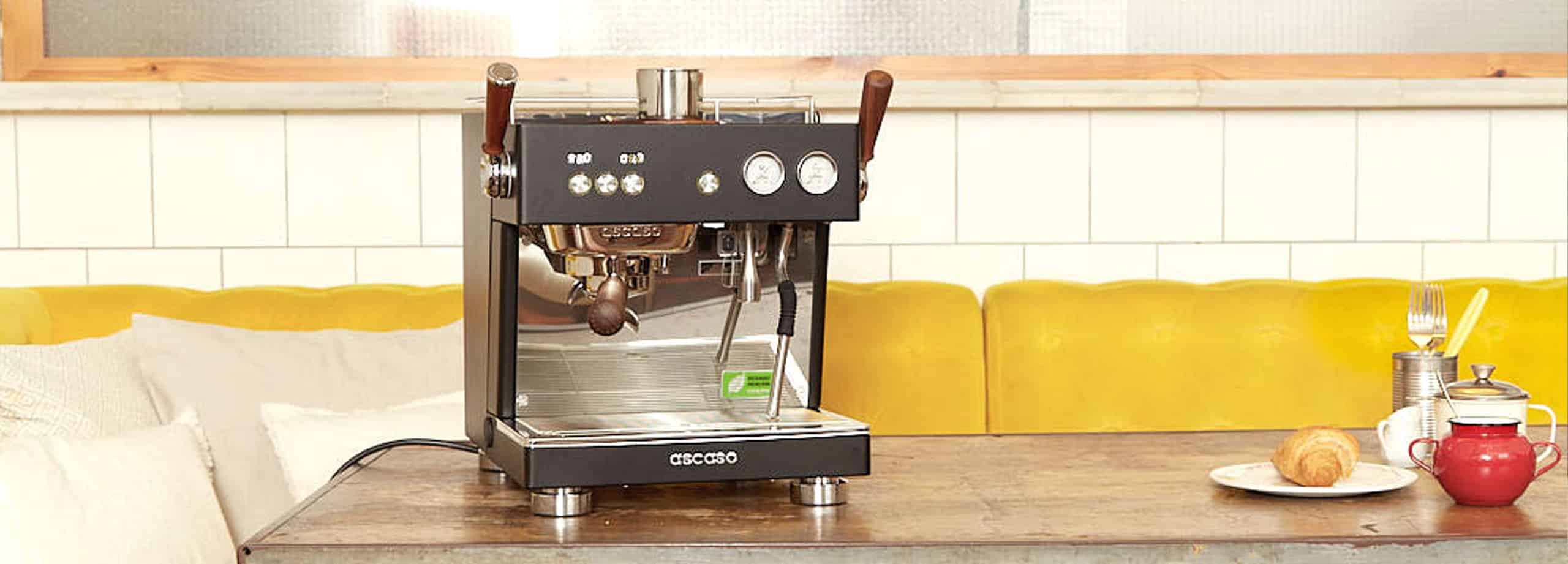
Do you want more information?
Do you want more information?
Do you want more information?
Do you want more information?
Do you want more information?
Do you want more information?
Do you want more information?
Do you want more information?
Do you want more information?
Do you want more information?
Do you want more information?
Highlights
| Technical Specifications | |
|---|---|
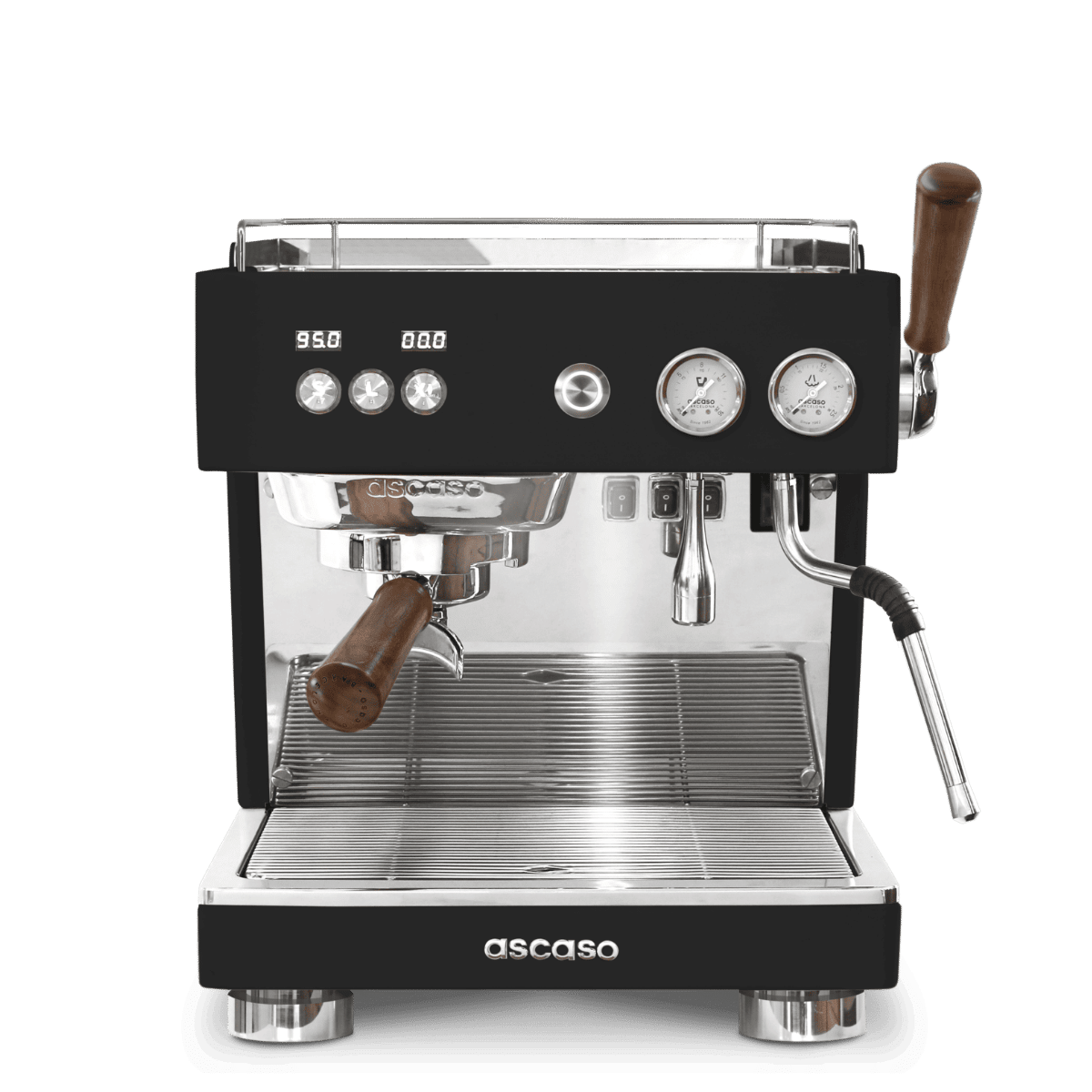 |
|
| Baby T | PLUS |
| Pump | Rotary |
| PID temperature control | via display |
| Digital multifunction display | 2 |
| Volumetric control | 4 programmable doses |
| Shot timer | |
| Statistics | |
| Programable pre-infusion | |
| App connectivity (iOS & Android) | |
| Separate hot water | |
| Dynamic pre-heating | |
| Thermal stability | ±0,5°C |
| Independent, insulated professional coffee group | |
| Independent, insulated stainless steel steam boiler | 2,5 l |
| Coffee temperature adjustment | 80° C to 110°C in 0,1°C increments |
| Steam temperature adjustment | 110° C to 165°C in 1°C increments |
| Externally visible water tank | 2 l with level sensor |
| Switchable between tank and mains water connection | |
| Cool touch steam wand | 12mm stainless steel |
| Pressure gauge | 2 (coffee / boiler) |
| Manual flow control lever | Optional |
| Programable stand-by | |
| Active cup warmer | |
| Barista lights | |
| Adjustable feet (+/-30mm) | chromed, large diameter |
| Wood handles | walnut |
| Joystick steam lever | |
| Stainless steel wire tray | |
| Competition accessories | |
| Housing Material | Stainless steel |
| Weight | 35 kg |
| Dimensions (w x h x d) | 350 x 450 x 430 mm |
| Coffee group power | 1000 W |
| Boiler power | 1200 W |
| Voltage | 230 V | 120 V |
| Power Guard System |
| Accessories | |
|---|---|
| Baby T | PLUS |
| Stainless steel, single spout portafilter | walnut handle |
| Stainless steel, double spout portafilter | walnut handle |
| Stainless steel, bottomless portafilter | walnut handle |
| 7 gr competition basket (1 coffee) | |
| 14 gr competition basket (2 coffees) | |
| 18 gr competition basket (2 coffees) | |
| 21 gr competition basket (3 coffees) | |
| Pressurized 7 gr basket (1 coffee) | |
| Pressurized 14 gr basket (2 coffees) | |
| ESE pad basket | |
| Blind basket | |
| Portafilter gasket | Silicone |
| Stainless steel shower | 200 µm, competition shower |
| Steam tip | 2-hole, 3-hole and 4-hole |
| Tamper | Stainless steel |
| Spoon | |
| Shower brush |

